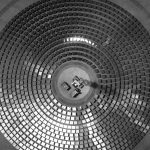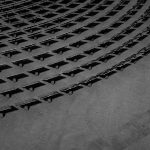My uncle who works on railway construction sent me a photo he took recently in the middle of the gobi desert near my hometown. In that photo there is a weathered beacon tower built with rammed earth in Han dynasty (202 BC-220 AD) for sending smoke signals, and a modern cell tower built just about 20 meters away for pretty much the same use, transmitting digital signals.
This scene happened in Hexi corridor, an arable plain flanked between the terrains of the Mongolian and Tibetan Plateaus, linking China proper to the central Asia as part of the silk
Road.
As a historical region, various groups of inner Chinese, Eurasian steppe and Tibetan Plateaus people have settled and established their civilisations, developed their religions and
have them merged into those vast open plains throughout centuries, had all the constructions left as monuments, beaming their message into the timeless wilderness.
This film is made to illustrate the unaltered civilisation-land relationship reveals through the fluctuating space-time overlaps that resulted by the collision between human and nature power
in this narrowed corridor in northwest China from a contemporary geo-cultural and geopolitical perspective, and also give the audience an alternative angle to view the modern China related topics such as economic disequilibrium, ethnic minority, silk road diplomacy.




